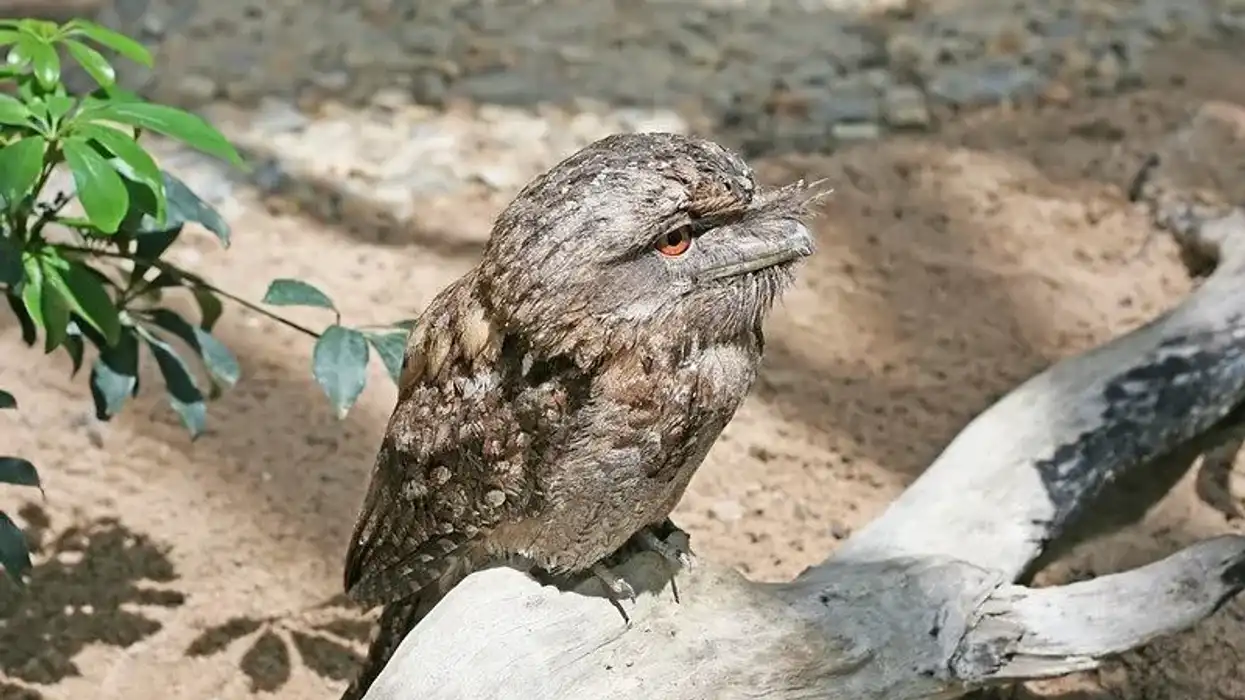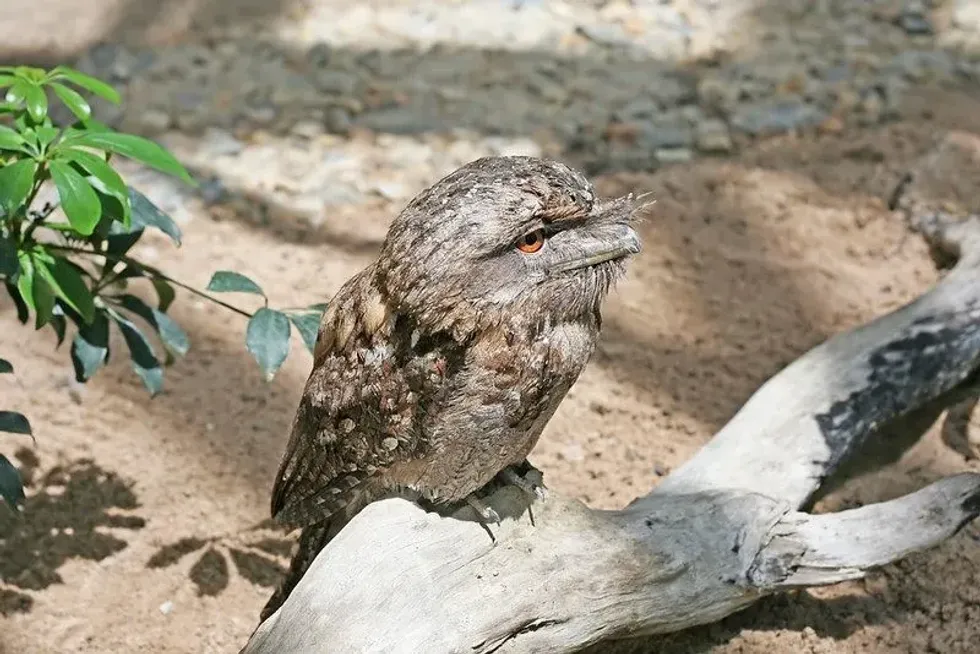Do you know what a Papuan frogmouth is? No? Well, that's OK! We're here to teach you about these amazing creatures.
The Papuan frogmouth (Podargus papuensis) is a type of bird that can be found in the rainforests of Papua New Guinea. They are known for their large mouths and wide eyes, which give them their unique appearance.
These birds are nocturnal, meaning they sleep during the day and hunt at night. In this blog, we will provide interesting facts about the Papuan frogmouth.
Papuan Frogmouth Interesting Facts
What type of animal is a Papuan frogmouth?
The Papuan frogmouth (Podargus papuensis) is a species of bird within the Podargidae family. This bird is nocturnal, feeding on insects caught with its large bill. Papuan belongs to the Podarus genus, which also has Tawny frogmouth (Podargus strigoides) and Marbled frogmouth (Podarus ocellatus).
This species has great hunting skills. While hunting, this species of bird keeps its mouth open, reflecting the moonlight, eventually attracting insects due to the yellow color. It brings the prey to the perch before rushing and swallowing.
What class of animal does a Papuan frogmouth belong to?
Papuan frogmouth (Podargus papuensis) is of the Aves class of animals.
How many Papuan frogmouths are there in the world?
The exact number of Papuan frogmouth (Podargus papuensis) species in the world is not unknown. This species of bird is quite common around its range of habitat like its relative, Tawny frogmouth (Podargus strigoides).
Where does a Papuan frogmouth live?
Papuan frogmouth (Podargus papuensis) occupies a wide range in West Papuan Islands' New Guinea, including Queensland in northeast Australia, Aru Islands, and Geelvink Bay.
What is a Papuan frogmouth's habitat?
Papuan frogmouth (Podargus papuensis) occupies forests with mangroves, swamp-woodlands, and streams in Australia. This bird species occupy urban and scrub gardens, wooded savannas, and gallery and second-growth forest in New Guinea. This species is found from the sea level to 3280 ft (1,000 m). Tawny frogmouth has also been observed to nest in parks and gardens with trees.
Who do Papuan frogmouths live with?
These birds are found in pairs like their relatives, Tawny frogmouth (Podargus strigoides). These pairs stay close for life. They are so close that they remove their young ones from the nest to live together.
How long does a Papuan frogmouth live?
The life expectancy of these birds is 40 years if they do not get eaten by a predator. However, their relative species Tawny frogmouth lives up to 14 years.
How do they reproduce?
The breeding season in Australia is from August to December, the peak of the season occurring in October or November. Female frogmouths in New Guinea may lay eggs in the drier season, from July to November.
The nest is built of sparse twigs with a rough platform. The nest is usually found at 19.6-25.6 ft (6-20 m) above the ground on a tree fork.
One to two white Papuan frogmouth eggs are laid in the nest and both parents take turns incubating the eggs. Male frogmouths incubate the eggs in the day, while females do it at night. The incubating bird is fed by its partner.
When the chicks hatch, they have white dawn. Both parents provide food to their young ones. The diet of chicks is frogs, small reptiles, and moths.
As chicks and adults stay motionless in the day, young Papuan frogmouth camouflage into the bark and are almost invisible. Young birds are able to fend for themselves around 30 days after they fledge. Young ones stay with their parents until the next mating season.
What is their conservation status?
The conservation status of Papuan frogmouth is Least Concern. Both Papuan frogmouth and tawny frogmouth (Podargus strigoides) are quite common around their habitats. Papuan frogmouth is described as fairly common around New Guinea and common around Australia.
Threats to creatures include habitat destruction and hunting by humans. The oldest recorded individual was 36 years old! There were two other records for older individuals - 34 and 35 years old.
Papuan Frogmouth Fun Facts
What do Papuan frogmouths look like?
Papuan frogmouths may have varying colors on their plumage with pale buff, gray, and mottled brown feathers. Their colors help them camouflage easily into backgrounds. Their wings appear to have dar coloration.
They often have pale underparts, primarily gray-brown with black streaks, irregular bars, and white spots. Their wings are round with their tail fairly long. The bill is frog-like and is pale-gray.
They have brown, yellow, orange, or red eyes. They have weak feet on their short legs. Females are quite identical to males, but she has fewer contrasting plumage patterns and darker upper parts. Young ones also have similar colors to the adults but are paler. The most common color in tawny frogmouth (Podargus strigoides) is gray in both sexes.
How cute are they?
These birds are usually considered cute.
How do they communicate?
Papuan frogmouths call is repetitive, resonant, and low-pitched 'ooom ooom ooom ooom', which is believed to be the call of female frogmouths. Both mates sing during the breeding season. While defending their territories, frogmouths produce a sharp, and loud mechanical snap that goes 'wu-wu-wu-wu CLAK.'
How big is a Papuan frogmouth?
The body size of Papuan frogmouth is 17.7-23.6 in (45-60 cm). Although the Papuan frogmouth wingspan is unknown, its relative, tawny frogmouth has a wingspan of 25.6-38.6 in (65-98 cm)
How fast can a Papuan frogmouth fly?
These birds fly strongly, however, not for long distances. They are swift over short distances like their relatives, tawny frogmouth. They usually stay on a branch and wait for their prey.
How much does a Papuan frogmouth weigh?
The range of bodyweight of these frogmouths is 0.69-0.91 lb (314-414 g). Their relatives, tawny frogmouth (Podargus strigoides) weigh 1.5 lb (690 g).
What are the male and female names of the species?
There is no specific name given to Papuan frogmouth male and Papuan frogmouth female.
What would you call a baby Papuan frogmouth?
Baby Papuan frogmouths are called chicks.
What do they eat?
The Papuan frogmouth diet is carnivorous, feeding mainly on insects, small reptiles, small birds, frogs, and mice.
Are they dangerous?
No, these are not considered dangerous.
Would they make a good pet?
No, these birds would not make good pets. They do well in and around forests.
Did You Know...
Joseph Paul Gaimard, a naturalist, and Jean Rene Constant Quoy, a zoologist first described the Papuan frogmouth (Podargus papuensis) in 1830.
Papuan frogmouth (Podargus papuensis) has three subspecies, Podargus papuensis rogersi, Podargus papuensis baileyi, Podargus papuensis papuensis.
Podargus papuensis rogersi subspecies is paler and larger, while Podargus papuensis baileyi is darker and smaller.
This frogmouth may secrete a chemical in its bill to attract flies.
How did Papuan Frogmouths get their name?
The name Papuan frogmouth was given to these birds because they have wide mouths with big eyes that make them look like an amphibian rather than just another bird.
What's unique about a Papuan Frogmouth?
Papuan frogmouths are known for their large mouths and wide eyes, which give them their unique appearance.
*We've been unable to source an image of Papuan frogmouth and have used an image of tawny frogmouth instead. If you are able to provide us with a royalty-free image of Papuan frogmouth, we would be happy to credit you. Please contact us at hello@kidadl.com.









